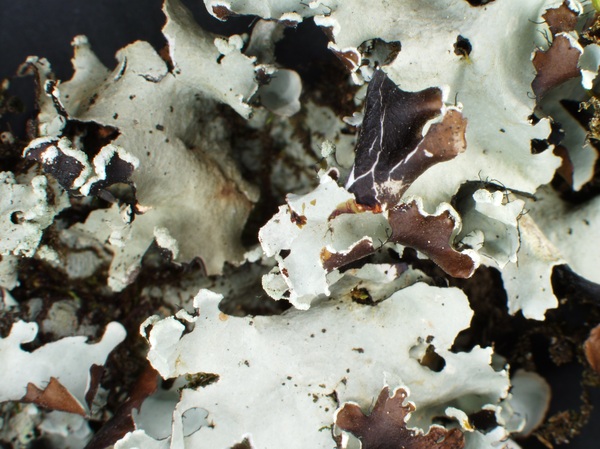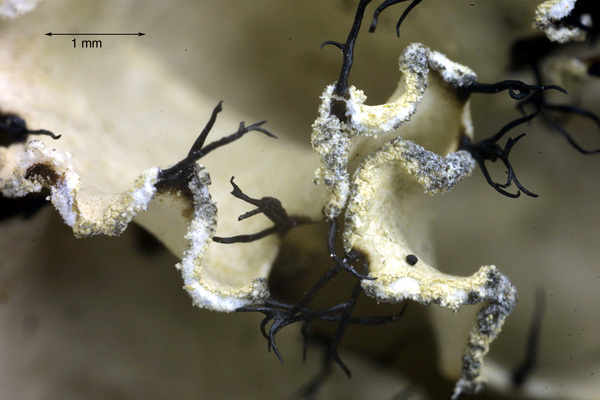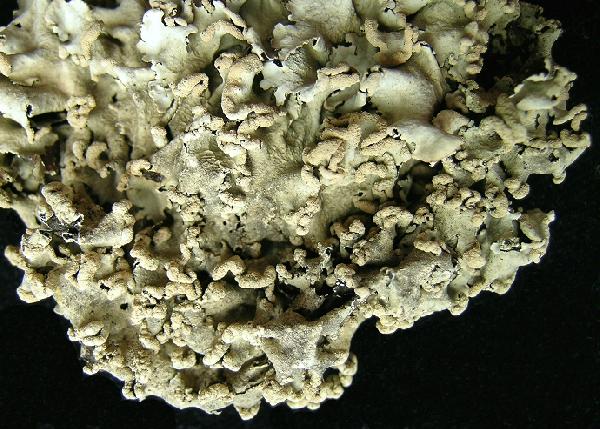Parmotrema stuppeum (Taylor) Hale
Phytologia, 28: 339, 1974. Basionym: Parmelia stuppea Taylor - London J. Bot., 6: 175, 1847.
Synonyms: Parmelia claudelii (Harm.) Vain.; Parmelia maxima Hue; Parmelia trichotera var. claudelii (Harm.) Du Rietz
Distribution: N - Lig (Giordani & Brunialti 2000, Giordani & al. 2001, Brunialti & Giordani 2003). C - Tosc (Putortì & Loppi 1999, Senese & Critelli 2000, Loppi & al. 2004c, Paoli & al. 2012), Laz (Brackel 2015), Sar (Stofer 2006, Rizzi & al. 2011, Di Nuzzo & al. 2022). S - Si (TSB 17234).
Description: Thallus foliose, heteromerous, dorsiventral, adnate to loosely adnate, grey, 2-20 cm in diam., sorediate. Lobes elongate, slightly imbricate, emaculate, 4-8 mm wide, rounded at apices, the margins with up to 2 mm long, black cilia. Soredia granular, arranged in linear to orbicular, laminal or marginal, usually confluent soralia. Lower surface black in central parts, with black, simple rhizines, the marginal zone pale brown, erhizinate. Upper cortex of tightly packed, anticlinally oriented hyphae, with a pored epicortex, the cell walls with lichenan intermediate between the Cetraria- and the Xanthoparmelia-types; medulla white; algal layer continuous; lower cortex prosoplectenchymatous, with rounded and thick-walled cells. Apothecia rare, lecanorine, substipitate, up to 30 mm across, with a brown, imperforate disc, and a smooth, raised thalline margin. Epithecium brownish; hymenium and hypothecium colourless. Asci 8-spored, Lecanora-type. Ascospores 1-celled, hyaline, ellipsoid, 12-17 x 6-9 µm. Pycnidia common, immersed, punctiform, black. Conidia sublageniform, 4-6 x c. 1 µm. Photobiont chlorococcoid. Spot tests: upper cortex K+ yellow, C-, KC-, P-, UV-; medulla K+ yellow turning deep red, C-, KC- or KC+ orange, P+ orange, UV-. Chemistry: upper cortex with atranorin and chloroatranorin; medulla with salazinic acid (major) and consalazinic acid (minor). Note: a mainly mild-temperate species found in open woodlands with frequent fog, mostly on ancient trees, but also on epilithic bryophytes; certainly declining in Italy. It is included in the Italian red list of epiphytic lichens as “Vulnerable” (Nascimbene & al. 2013c).
Growth form: Foliose, broad lobed
Substrata: bark
Photobiont: green algae other than Trentepohlia
Reproductive strategy: mainly asexual, by soredia, or soredia-like structures (e.g. blastidia)
Most common in areas with a humid-warm climate (e.g. most of Tyrrenian Italy)
Commonnes-rarity: (info)
Alpine belt: absent
Subalpine belt: absent
Oromediterranean belt: absent
Montane belt: extremely rare
Submediterranean belt: absent
Padanian area: absent
Humid submediterranean belt: extremely rare
Humid mediterranean belt: absent
Dry mediterranean belt: absent
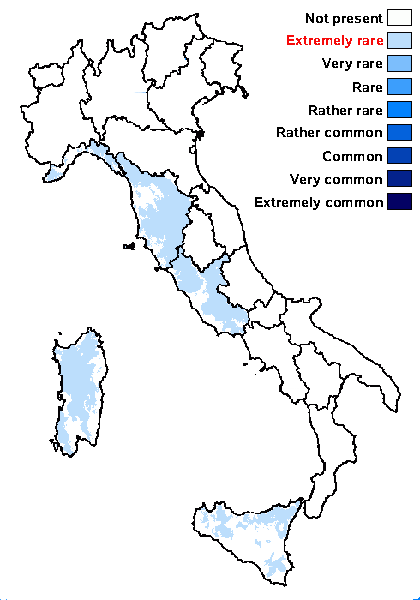
Predictive model
Herbarium samples
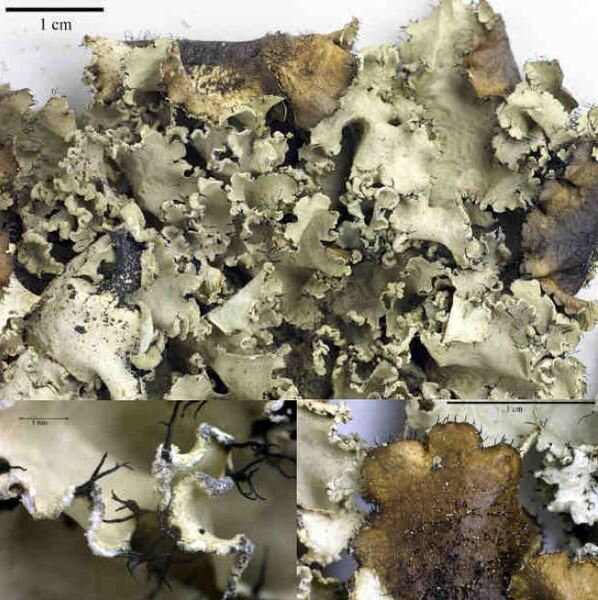

Felix Schumm – CC BY-SA 4.0
Image from: F. Schumm (2008) - Flechten Madeiras, der Kanaren und Azoren. Beck, OHG - ISBN: 978-3-00-023700-3
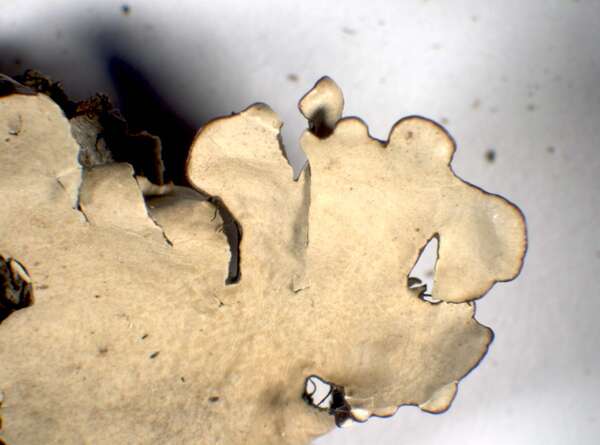

P.L. Nimis; Owner: Department of Life Sciences, University of Trieste
Herbarium: TSB (10719)
2001/11/28
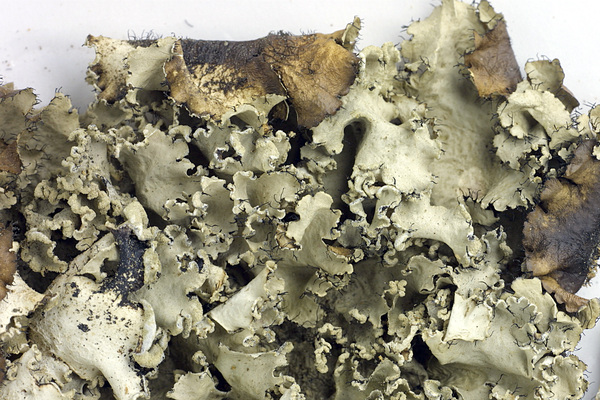

Felix Schumm - CC BY-SA 4.0
[9437], USA, Maryland, Baltimore County: 2825 Ridge Road (Baltimore, MD 21244). Growing on the bark of a limb of a dying Norway Maple in the front yard of a private residence. Leg. Edward C. Uebel 23.08.2001 (U-331H), det. Edward C. Uebel.
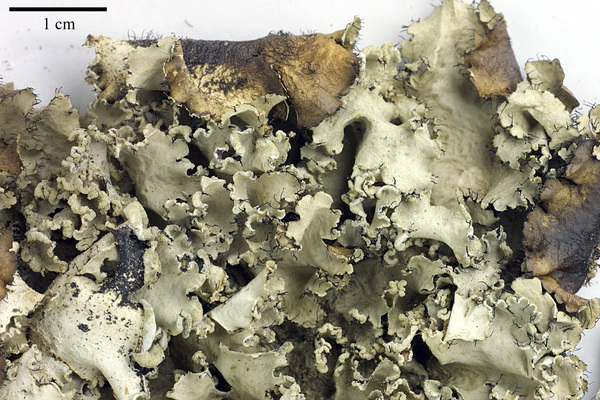

Felix Schumm - CC BY-SA 4.0
[9437], USA, Maryland, Baltimore County: 2825 Ridge Road (Baltimore, MD 21244). Growing on the bark of a limb of a dying Norway Maple in the front yard of a private residence. Leg. Edward C. Uebel 23.08.2001 (U-331H), det. Edward C. Uebel.
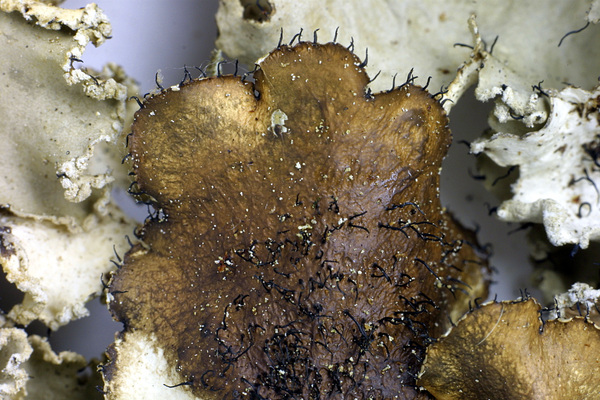

Felix Schumm - CC BY-SA 4.0
[9437], USA, Maryland, Baltimore County: 2825 Ridge Road (Baltimore, MD 21244). Growing on the bark of a limb of a dying Norway Maple in the front yard of a private residence. Leg. Edward C. Uebel 23.08.2001 (U-331H), det. Edward C. Uebel.
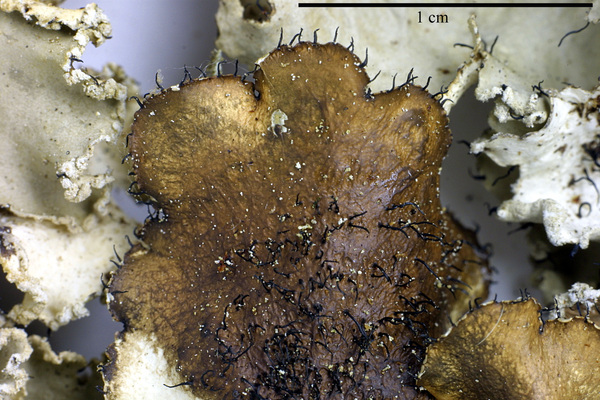

Felix Schumm - CC BY-SA 4.0
[9437], USA, Maryland, Baltimore County: 2825 Ridge Road (Baltimore, MD 21244). Growing on the bark of a limb of a dying Norway Maple in the front yard of a private residence. Leg. Edward C. Uebel 23.08.2001 (U-331H), det. Edward C. Uebel.
Growth form: Foliose, broad lobed
Substrata: bark
Photobiont: green algae other than Trentepohlia
Reproductive strategy: mainly asexual, by soredia, or soredia-like structures (e.g. blastidia)
Most common in areas with a humid-warm climate (e.g. most of Tyrrenian Italy)
Commonnes-rarity: (info)
Alpine belt: absent
Subalpine belt: absent
Oromediterranean belt: absent
Montane belt: extremely rare
Submediterranean belt: absent
Padanian area: absent
Humid submediterranean belt: extremely rare
Humid mediterranean belt: absent
Dry mediterranean belt: absent

Predictive model
| Herbarium samples |


Felix Schumm – CC BY-SA 4.0
Image from: F. Schumm (2008) - Flechten Madeiras, der Kanaren und Azoren. Beck, OHG - ISBN: 978-3-00-023700-3


P.L. Nimis; Owner: Department of Life Sciences, University of Trieste
Herbarium: TSB (10719)
2001/11/28


Felix Schumm - CC BY-SA 4.0
[9437], USA, Maryland, Baltimore County: 2825 Ridge Road (Baltimore, MD 21244). Growing on the bark of a limb of a dying Norway Maple in the front yard of a private residence. Leg. Edward C. Uebel 23.08.2001 (U-331H), det. Edward C. Uebel.


Felix Schumm - CC BY-SA 4.0
[9437], USA, Maryland, Baltimore County: 2825 Ridge Road (Baltimore, MD 21244). Growing on the bark of a limb of a dying Norway Maple in the front yard of a private residence. Leg. Edward C. Uebel 23.08.2001 (U-331H), det. Edward C. Uebel.


Felix Schumm - CC BY-SA 4.0
[9437], USA, Maryland, Baltimore County: 2825 Ridge Road (Baltimore, MD 21244). Growing on the bark of a limb of a dying Norway Maple in the front yard of a private residence. Leg. Edward C. Uebel 23.08.2001 (U-331H), det. Edward C. Uebel.


 Index Fungorum
Index Fungorum
 GBIF
GBIF
